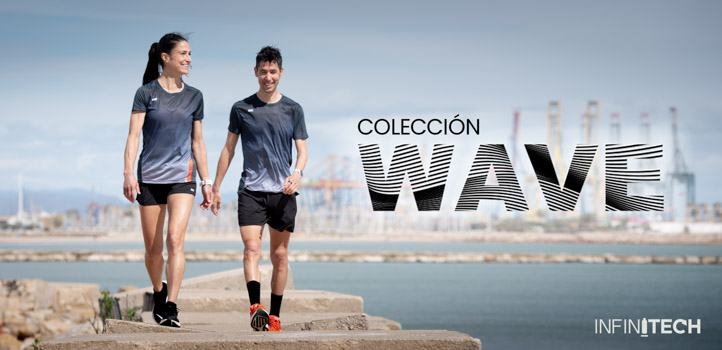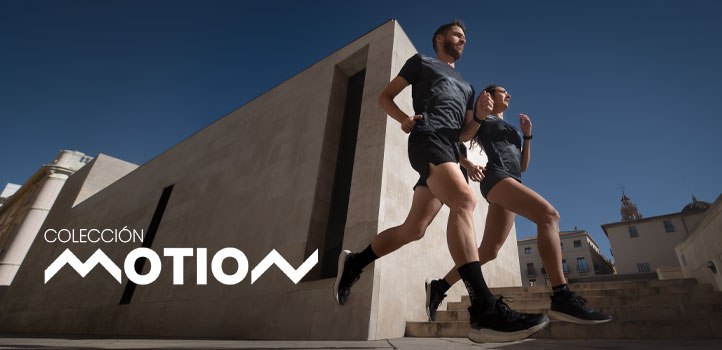Subscribe to our newsletter to find out about all the news and promotions, and automatically receive a welcome discount coupon in your email.
The heat begins and you have to take special care with hydration when training.
 Particularly on these hot days, in an effort to remember and praise the benefits of adequate hydration as an unequivocal condition of good health and better physical performance, the shelves of supermarkets and sports equipment stores are filled with bottles, jars or envelopes of drinks sports All brands highlight the perfect nutritional combination, although many of the attached messages confuse the consumer who is not sure which to choose from the existing variety.
Particularly on these hot days, in an effort to remember and praise the benefits of adequate hydration as an unequivocal condition of good health and better physical performance, the shelves of supermarkets and sports equipment stores are filled with bottles, jars or envelopes of drinks sports All brands highlight the perfect nutritional combination, although many of the attached messages confuse the consumer who is not sure which to choose from the existing variety.
The creator of the concept of these products was Robert Cade, a doctor and scientist at the University of Florida, who in the 1960s developed a method to replace fluids and nutrients that athletes lose through sweat. From there, the investigations are innumerable and many of the sports drinks that we know today were developed and commercialized.
Only for athletes?
The so-called sports drinks were designed with a specific objective: to satisfy with the intake of a single product part of the energy, fluid and / or electrolyte needs of professional athletes. These drinks also serve the sports fan, who is attracted by the messages that accompany them, and uses them regularly with the aim of improving their physical condition or accelerating their recovery, although they are not always necessary, since by the duration and the intensity of the sport you practice, it would be enough to drink water.
Choose the most suitable drink.
Many people choose these drinks based only on the taste or presentation (liquid, powder, in sachets, etc.), although sports nutrition experts assure that several factors influence the convenience of drinking one drink or another, such as the type , the duration and intensity of exercise, environmental conditions (temperature, humidity) and individual differences in sweating, among others. Sports drinks have common components: water, simple carbohydrates (glucose, fructose, glucose ...) or complex (glucose polymers) and electrolytes (sodium, potassium, chlorine, phosphorus, magnesium, calcium, etc.). Some brands include vitamins and additives for coloring, flavoring and sweetening. The difference between one and the other lies mainly in the degree of concentration of its components.
Types of sports drinks:
isotonic, hypertonic and hypotonic
 Isotonic drink: It contains sugars and electrolytes at the same osmotic pressure as blood (330 milliosmoles/liter -mmosml/l-). When two solutions have the same osmotic pressure, they are said to be isosmotic or isotonic. For this reason, the liquid leaves the stomach, passes to the intestine where it is absorbed and from there it goes to the bloodstream without difficulty, which favors the rapid and optimal assimilation of its constituents. If the exercise is intense, the environment is hot or you sweat a lot, drinking an isotonic drink helps to replenish fluids, electrolytes (especially sodium and chlorine) and energy (glucose), lost during the effort. It helps delay fatigue, prevent heat injuries (cramps, syncope...), improve performance and speed up recovery. In sports of long duration and medium/high intensity, preparations containing glucose polymers (maltodextrins) are recommended, not just glucose or fructose, due to their ability to ensure a sufficient energy supply without the risk of digestive disorders. Isotonic drinks are also used to speed up recovery in case of diarrhea, since their composition is similar to the oral serum sold in pharmacies, and because of their pleasant taste, they are usually better tolerated. And they can become the best way to drink fluids for those who are reluctant to drink plain water, such as kids and the elderly.
Isotonic drink: It contains sugars and electrolytes at the same osmotic pressure as blood (330 milliosmoles/liter -mmosml/l-). When two solutions have the same osmotic pressure, they are said to be isosmotic or isotonic. For this reason, the liquid leaves the stomach, passes to the intestine where it is absorbed and from there it goes to the bloodstream without difficulty, which favors the rapid and optimal assimilation of its constituents. If the exercise is intense, the environment is hot or you sweat a lot, drinking an isotonic drink helps to replenish fluids, electrolytes (especially sodium and chlorine) and energy (glucose), lost during the effort. It helps delay fatigue, prevent heat injuries (cramps, syncope...), improve performance and speed up recovery. In sports of long duration and medium/high intensity, preparations containing glucose polymers (maltodextrins) are recommended, not just glucose or fructose, due to their ability to ensure a sufficient energy supply without the risk of digestive disorders. Isotonic drinks are also used to speed up recovery in case of diarrhea, since their composition is similar to the oral serum sold in pharmacies, and because of their pleasant taste, they are usually better tolerated. And they can become the best way to drink fluids for those who are reluctant to drink plain water, such as kids and the elderly.
 Hypertonic drinks. They contain a higher concentration of solutes per unit volume than blood. The body secretes water to dilute the overly concentrated liquid until it becomes isotonic. For this reason, they are appropriate for prolonged efforts carried out in cold weather, where sweat loss is small and it is not necessary to compensate for so many fluids, but an extra contribution of carbohydrates is necessary. If the athlete drinks hypotonic or isotonic drinks, he does not receive enough carbohydrates and is at risk of suffering from a "bitter." In other situations, if the concentration of these drinks exceeds 10%, gastric emptying and water absorption are delayed, which can cause gastrointestinal problems that would affect sporting success (flatulence, cramps, diarrhea, etc.).
Hypertonic drinks. They contain a higher concentration of solutes per unit volume than blood. The body secretes water to dilute the overly concentrated liquid until it becomes isotonic. For this reason, they are appropriate for prolonged efforts carried out in cold weather, where sweat loss is small and it is not necessary to compensate for so many fluids, but an extra contribution of carbohydrates is necessary. If the athlete drinks hypotonic or isotonic drinks, he does not receive enough carbohydrates and is at risk of suffering from a "bitter." In other situations, if the concentration of these drinks exceeds 10%, gastric emptying and water absorption are delayed, which can cause gastrointestinal problems that would affect sporting success (flatulence, cramps, diarrhea, etc.).
Hypotonic drinks. The concentration of particles per unit volume is lower than that of blood plasma (lower osmotic pressure). Water is the best example. In general, after moderate exercises lasting less than an hour, which many people are used to, an extra supply of electrolytes is not necessary; it is enough to simply drink water before, during and after exercise to achieve adequate hydration. Water, in combination with a balanced diet, already provides the body with the necessary levels of electrolytes.
The last two drinks; Hypertonic and hypotonic, they have slower absorption rates, this being a disadvantage if a rapid fluid or energy replacement is intended.
Do not forget to hydrate well!
Source: Saluddeportiva
42K Best sellers in the last 15 days.
- 20,00 €



T-shirt running 42K WAVE Ocean
- 22,00 €


Pants running unisex DASH Black 5 inches
- Offer! The original price was: €13,50.10,00 €The current price is: €10,00.

Windbreaker running 42K VEST White
- Offer! The original price was: €13,50.10,00 €The current price is: €10,00.

Windbreaker running 42K VEST Orange
42K · All rights reserved


Comments
Post a first comment for this entry!